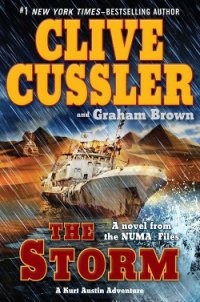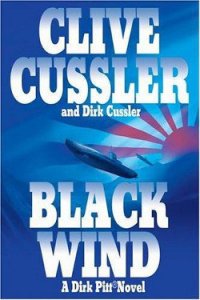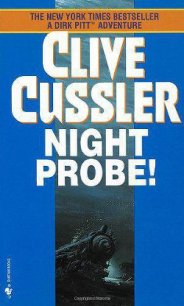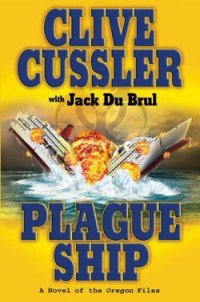Flood Tide - Cussler Clive (читать книги без txt) 📗
If there was any risk and danger attached to the planned covert activity, the men and officers congregated in the wheel-house demonstrated an utter immunity to it. The chartroom and the deck around the helm had become a corporate boardroom. The merits of different Asian stocks and bonds were being weighed. They were savvy investors who followed the market with seemingly more interest than they showed for the coming spy job on the United States.
Cabrillo stepped in from the bridge wing, noticed Pitt and Giordino, and approached them. “My friends in Hong Kong have informed me that the United States is tied up at Qin Shang Maritime's terminal dock at Kwai Chung north of Kowloon. The proper harbor officials have been bribed, and we've been given a berth in the channel about five hundred yards from the liner.”
“A thousand-yard round trip,” said Pitt, mentally calculating the submersible's downtime.
“Sea Dog 7 has batteries—how far can you stretch them?” asked Cabrillo.
“Fourteen hours if we treat them gently,” replied Giordino.
“Can you be towed behind a launch while underwater and out of sight?”
Pitt nodded. “A tow to and from would give us an extra hour under the liner's hull. I must warn you, though, the submersible is no lightweight. Its underwater drag will make ponderous going for a small launch.”
Cabrillo smiled evenly. “You don't know what type of engines power our shore launch and lifeboats.”
“I'm not even going to ask,” said Pitt. “But I'm guessing they could hold their own in a Gold Cup hydro race.”
“We've given away enough of the Oregon's technical secrets for you to write a book on her.” Cabrillo turned and peered through the bridge window as the pilot boat came out from the harbor, made a 180-degree turn and came alongside. The ladder was dropped, and the pilot stepped from his boat and climbed to the deck while both vessels were still under way. He went directly to the bridge, greeted Cabrillo and took charge of the helm.
Pitt walked outside onto the bridge wing and viewed the incredible carnival of colored lights of Kowloon and Hong Kong as the ship slipped through the channel to her assigned anchorage northwest of the central harbor. Along the waterfront of Victoria Harbor, the skyscrapers were illuminated like a forest of giant Christmas trees. In appearance, the city had changed little after it was taken over in 1997 by the People's Republic of China. For most of the residents life went on as before. It was the wealthy, along with many of the giant corporations, who had moved, primarily to the West Coast of the United States.
He was joined by Giordino as the ship closed on Qin Shang's dock terminal. The transatlantic ocean liner that was once the pride of America's maritime fleet appeared and grew larger.
During the flight to Manila he and Giordino had studied a lengthy report on the United States. The brainchild of the famed ship designer William Francis Gibbs, she was built by the Newport News Ship Building & Dry Dock Company, who laid her keel in 1950. Gibbs, a genius and a genuine character, was to marine engineering and design what Frank Lloyd Wright was to dry-land architecture. His dream was to create the fastest and most beautiful passenger liner yet built. He achieved his dream, and his masterpiece became the pride and apex of America during the age of great liners. She was truly the ultimate in elegant refinement and speed.
Gibbs was fanatical about weight and fireproofing. He insisted on using aluminum whenever possible. From the 1.2 million rivets driven into her hull to the lifeboats and their oars, stateroom furnishings and bathroom fixtures, baby's high chairs, even coat hangers and picture frames, all had to be aluminum. The only wood on the entire ship was a fireproof Steinway piano and the chef's butcher block. In the end, Gibbs had reduced the weight of the superstructure by 2,500 tons. The result was a ship of remarkable stability.
Considered huge then and now with a gross tonnage of 53,329 and measuring 990 feet in length with a 101-foot beam, she was not the world's largest liner. At the time of her construction the Queen Mary outweighed her by over 30,000 tons and the Queen Elizabeth was forty-one feet longer. The Cunard Line Queens may have provided a more ornate and baroque atmosphere, but the American ship's lack of rich wood paneling and fancy decor in favor of tasteful restraint, and her speed and safety were the elements that set the United States apart from her contemporaries. Unlike foreign competing liners, the Big U, as her crew had affectionately called her, gave her passengers 694 unusually spacious staterooms and air conditioning. Nineteen elevators carried passengers between the decks. Besides the usual gift shops, they could enjoy three libraries and two cinemas and could worship in a chapel.
But her two greatest assets were a military secret at the time of her building and operation. Not until several years later did it become known that she could be converted into a military transport capable of carrying 14,000 troops within a few weeks. Powered by eight massive boilers creating superheated steam, her four Westinghouse-geared turbines could put out 240,000 horsepower, 60,000 for each of her four propeller shafts, and drive her through the water just under fifty miles an hour. She was one of the few liners that could slip through the Panama Canal, charge across the Pacific to Singapore and back to San
Francisco without refueling. In 1952, the United States won the prestigious Blue Riband, awarded for the fastest speed across the Atlantic. No liner has won it since.
A decade after she left the shipyard, she had become an anachronism. Commercial airplanes were already becoming competition to the famed greyhounds of the sea. By 1969, rising operating costs and the public's desire to reach their destination in the shortest time possible by air, spelled the end for America's greatest ocean liner. She was retired and laid up for thirty years at Norfolk, Virginia, before eventually finding her way to China.
Borrowing a pair of binoculars, Pitt studied the huge ship from the bridge of the Oregon. Her hull was still painted black, her superstructure white, her two great, magnificent funnels red, white and blue. She looked as magnificent as the day she broke the transatlantic record.
He was puzzled to see her ablaze with light. The sounds of activity echoed across the water. It puzzled him that Qin Shang's shipyard crews were working on her around the clock without any attempt at secrecy. Then, curiously, all sounds and activity suddenly stopped.
The pilot nodded at Cabrillo, who rang the ancient telegraph to STOP ENGINES. Unknown to the pilot, the telegraph was nonfunctional and Cabrillo muttered orders through a handheld radio. The vibration died, and the Oregon went as quiet as a tomb as she slowly moved forward under her own momentum. Then the command came for slow astern, followed shortly by all stop.
Cabrillo gave the order to let go the anchor. The chain rattled, and it fell with a splash into the water. Then he shook hands with the pilot after signing the usual affidavits and logging the mooring. He waited until the pilot was on board the pilot boat before motioning to Pitt and Giordino.
“Come join me in the chartroom and we'll go over tomorrow's program.”
“Why wait another twenty-four hours?” asked Giordino.
Cabrillo shook his head. “Tomorrow after dark is soon enough. We still have customs officials due aboard. No sense in alerting suspicions.”
Pitt said, “I think we have a breakdown in communications.”
Cabrillo looked at him. “You see a problem?”
“We have to go during daylight. We have no visibility at night.”
“Can't you use underwater lights?”
“In black water any bright light stands out like a beacon. We'd be discovered ten seconds after we switched on our floods.”




